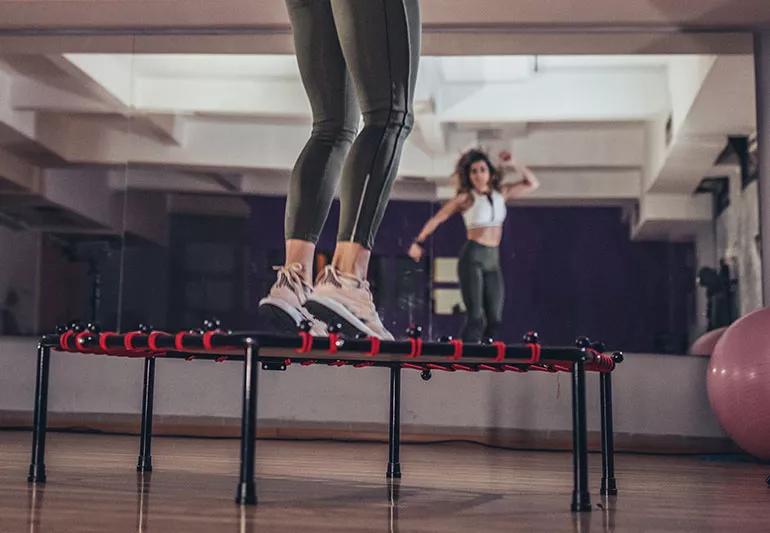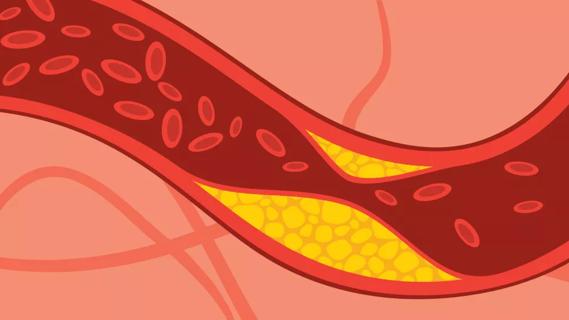It turns out that jumping around is as healthy as it is fun

Jump on it! Jump on it! Jump on a trampoline, that is, if you want some serious health benefits disguised within a very fun, bouncy workout.
Advertisement
Cleveland Clinic is a non-profit academic medical center. Advertising on our site helps support our mission. We do not endorse non-Cleveland Clinic products or services. Policy
Exercise coordinator Lori Lyons, MBA, AFAA, CWA, explains how you can get the jump on your health by working out on trampolines.
It depends on what kind of trampoline we’re talking about.
As a kid, you may have enjoyed bouncing on those giant backyard trampolines, the dangerous kind that terrified your parents. Those trampolines are associated with so many injuries that the American Academy of Pediatrics says they should only be used by supervised athletes in training for a sport, like gymnastics or diving.
But for adults, exercising on an indoor mini-trampoline is both safe and beneficial to your health. These smaller versions, known as rebounders, are specifically designed for individual workouts.
“Rebounders are low to the ground, which gives you more stability and lessens the chance that you’ll go flying off them mid-jump,” Lyons says.
Rebounding (the act of jumping on a rebounder) is a full-body workout that impacts — you guessed it — your entire body. Here are some of the known health benefits of jumping on a mini-trampoline.
Unlike targeted training, jumping requires the use of multiple muscles. “When you jump, you use the entire momentum of your body, which forces all of your different muscles to work simultaneously,” Lyons explains.
Advertisement
All of that up-and-down works everything from your abs and glutes to your leg and back muscles, building a strong core and beyond.
“As we get older our bones become more fragile, and it’s very important to start doing the exercises that will improve our bone density,” Lyons says.
One study found that competitive trampolinists had higher bone density at the hip and spine than their peers. Of course, most people aren’t competitive trampolinists — but the data suggests that regular trampolining can help strengthen your bones, which lessens your chances of osteoporosis.
Speaking of bone density: As we age, we’re prone to decreased bone density, which can increase the likelihood of getting injured during a fall. But one study found that 14 weeks of mini-trampoline exercises increased seniors’ ability to regain their balance before falling by about 35%.
“Rebounding is associated with better balance, coordination and motor skills, which can be especially important for people who are at risk of falling,” Lyons says.
“Cardio activity strengthens the heart muscles and decreases the amount of work your body has to do to pump blood,” Lyons says. This can lower your:
All of these are, of course, very good news for your overall heart health.
There may be something to the phrase “jump for joy.” Exercise, in general, is associated with stress relief because it releases endorphins — natural substances that help you feel better and maintain a positive attitude.
Rebounding is specifically associated with stress relief because of the unique impact it has on your body.
“Jumping causes you to repeatedly tense and release your muscles, which is good for your circulation,” Lyons says. “Then, when you’re done jumping, your muscles are loose and relaxed.”
Ready to jump to it? Here are a few tips for rebounding beginners:
Advertisement
If you have any concerns about your ability to use a rebounder or how it may impact your body, be sure to check with your doctor before getting started.
Advertisement
Learn more about our editorial process.
Advertisement

You can counter the risk of prediabetes-related heart attack or stroke by eating more fruits, vegetables and whole grains, as well as exercising regularly

LDL cholesterol and lipoprotein (a) cholesterol are more likely to stick to your arteries and lead to dangerous heart events

Having underweight, having overweight and having obesity can be dangerous for your heart

This technology can benefit your workouts by helping you hit your target heart rate, resulting in better overall health and wellness

A resting heart rate below 35–40 beats per minute or over 100 beats per minute may be cause for concern

Your natural estrogen levels support a healthy heart by improving your cholesterol, increasing blood flow and reducing free radicals

Ground flaxseed is full of heart-healthy omega-3s, antioxidants and fiber, and easy to add to just about any recipe

Type 2 diabetes isn’t inevitable with these dietary changes

Applying a hot or cold compress can help with pain